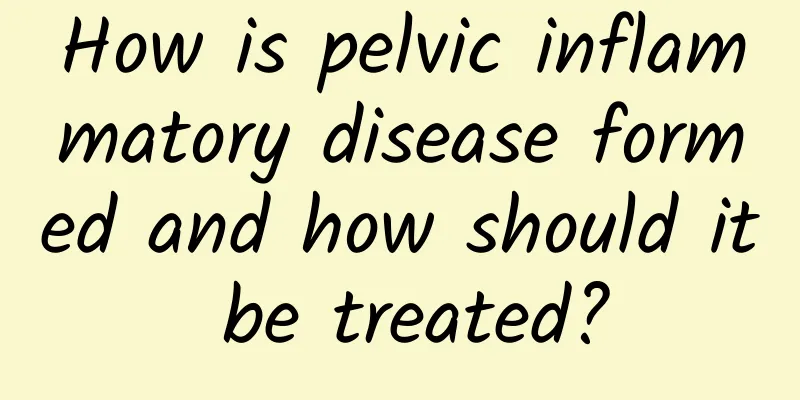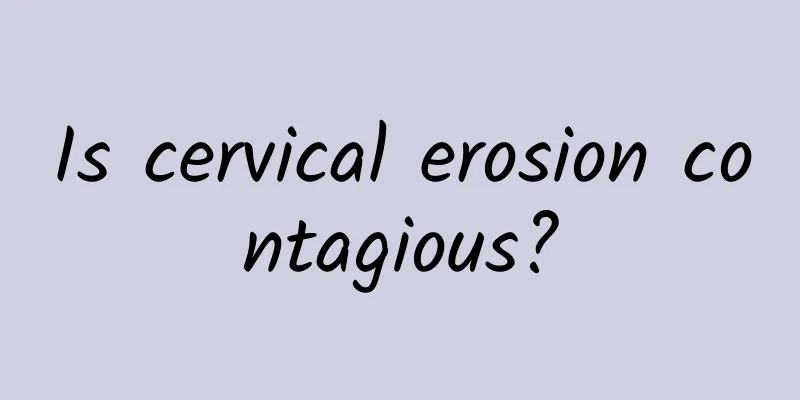How is pelvic inflammatory disease formed and how should it be treated?

|
Pelvic inflammatory disease is also called adnexitis, which is a common gynecological disease. Many women worry that they cannot get pregnant because of pelvic inflammatory disease. So how does pelvic inflammatory disease form? How to treat it? Pelvic inflammatory disease can be caused by the spread of external genital inflammation, inflammation of adjacent organs or infection from other parts of the body. Bacteria usually enter the pelvic cavity during menstruation, miscarriage, childbirth or through various reproductive tract surgical wounds to cause inflammation. Pelvic inflammatory disease is generally divided into acute and chronic. The former is acute and generally has obvious causes. If the treatment is timely, thorough and effective, it can often be cured. When acute inflammation cannot be completely treated, it may turn into chronic disease. However, it is more because the disease is slow and mild and is not paid attention to, so the treatment is not timely and delayed to chronic disease. This type of pelvic inflammatory disease often leads to infertility in women. Inflammation of the female pelvic reproductive organs and their surrounding connective tissues, and pelvic peritonitis, is called pelvic inflammation, including metritis, salpingo-oophoritis, pelvic connective tissue inflammation, and pelvic peritonitis. It can occur in one or more places at the same time and is one of the common diseases in women. Since the fallopian tubes and ovaries are collectively called appendages, fallopian tube inflammation often affects the adjacent ovaries. It is also called adnexitis. General treatment of pelvic inflammatory disease can alleviate patients' mental concerns, enhance their confidence in treatment, increase nutrition, exercise, pay attention to the combination of work and rest, and improve their body resistance. Pelvic inflammatory disease - physical therapy: warm and benign stimulation can promote local blood circulation in the pelvis, improve the nutritional status of tissues, improve metabolism, and promote the absorption and disappearance of inflammation. Commonly used methods include short wave, ultrashort wave, ion penetration, wax therapy, etc. |
<<: What to do if you have irregular menstruation after childbirth
>>: Does ovarian cyst affect fertility? What are the symptoms?
Recommend
Can chronic adnexitis be completely cured?
Chronic adnexitis is a disease that many women su...
Ariel Lin doesn’t eat cold foods to lose weight, and only eats the stems of vegetables? Nutritionist: The key to success is...
Lin Yichen, who has been in the industry for many...
What are the symptoms of cervical erosion in women? Women should be alert to these symptoms of cervical erosion
What are the symptoms of cervical erosion? The te...
Symptoms of various types of vulvar leukoplakia
Most people are still too unfamiliar with disease...
How to treat abortion syndrome? Introduction to the treatment methods of abortion syndrome
Speaking of abortion, many female friends think i...
How much does it cost to remove the IUD in Shenzhen
With the accelerated pace of modern life, premari...
Healthy and without burden! Buckwheat tea is a low GI drink that can give you energy
Drinking tea has many benefits, it is healthy, re...
Is cervical precancerous lesion considered cancer?
Cervical precancerous lesions are not cancer, but...
Good hospital for endometrial tuberculosis
Endometrial tuberculosis is a very common gynecol...
Lose weight by intermittent fasting! 5 anti-aging and disease prevention effects
When we first heard about "fasting", th...
What is the best treatment for vulvar itching?
Vulvar itching can cause a lot of embarrassing mo...
What should I prepare for hospitalization for adenomyoma of the uterus? How many days should I be hospitalized for adenomyoma of the uterus?
Uterine adenomyosis is a common gynecological dis...
Do you know the symptoms of cervical erosion?
Cervical erosion is caused by long-term inflammat...
Is it easy to get pregnant with pelvic inflammatory disease?
Pelvic inflammatory disease is a common disease a...
How to take care of cervicitis in the elderly? A complete list of nursing methods for cervicitis in the elderly
For the elderly, all aspects of their health have...









